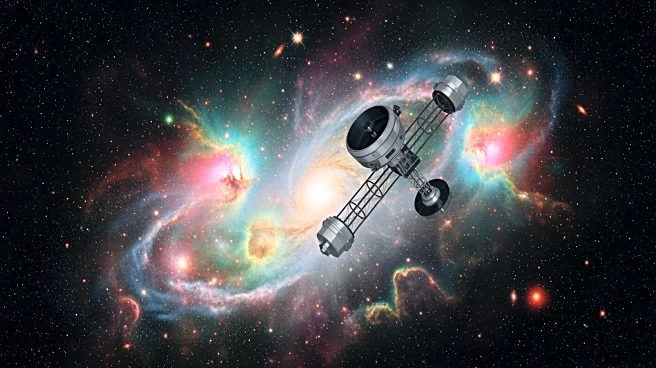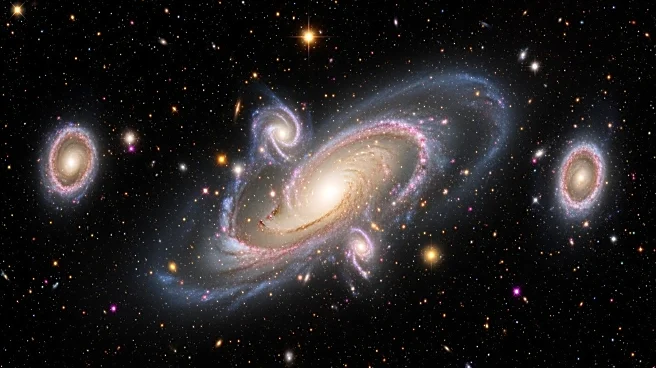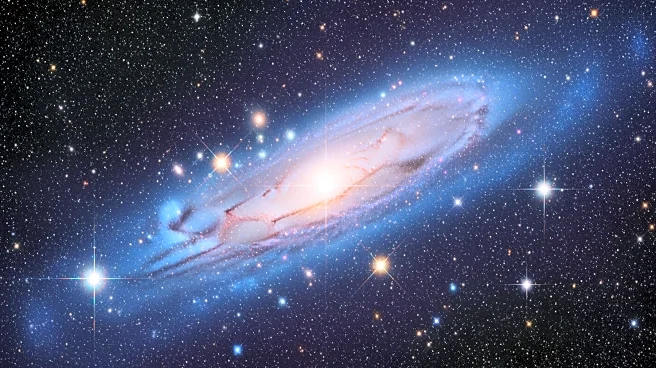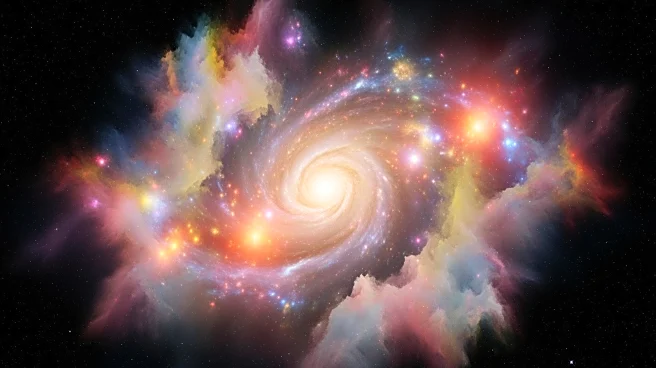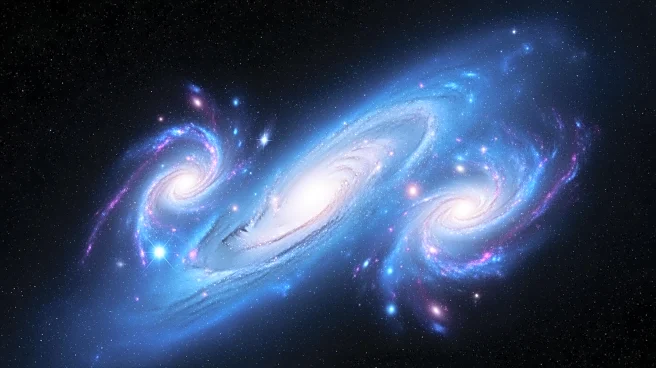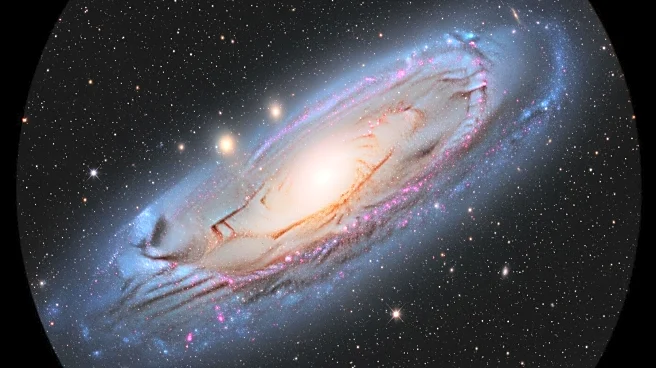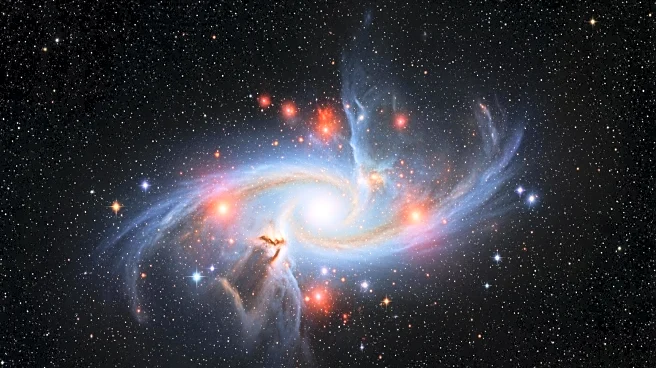What's Happening?
Astronomers have discovered a rogue planet, Cha 1107-7626, that is rapidly accumulating gas and dust at an unprecedented rate, akin to the behavior of young stars. This planet, observed using the European
Southern Observatory's Very Large Telescope and the James Webb Space Telescope, is consuming material at a rate of 6.6 billion tons per second. The phenomenon, known as an 'accretion burst,' is typically associated with star formation, raising questions about the formation and evolution of such rogue planets. The study, published in The Astrophysical Journal Letters, aims to understand whether these planets are ejected from their original systems or form independently like stars.
Why It's Important?
The discovery of Cha 1107-7626 challenges existing theories about planet and star formation, suggesting a potential overlap in their developmental processes. Understanding these accretion bursts could provide insights into the early stages of planetary systems and the conditions that lead to their formation. This research could have broader implications for astrophysics, particularly in understanding the chemical composition of meteorites and the history of our solar system. The findings may also influence future studies on the prevalence and characteristics of rogue planets, which remain elusive due to their faint infrared emissions.
What's Next?
Future research will focus on determining the frequency and significance of accretion events in rogue planets. Scientists aim to use advanced telescopes like the VLT and JWST to observe more rogue planets, which could clarify whether their formation processes align more closely with stars or planets. This ongoing research may reveal a universal mechanism behind accretion bursts, potentially reshaping our understanding of planetary and stellar evolution.
Beyond the Headlines
The study of rogue planets like Cha 1107-7626 could lead to a reevaluation of the criteria distinguishing planets from stars. The accretion parallels observed may suggest a shared evolutionary pathway, prompting further investigation into the environmental factors influencing planetary system development. This research could also impact the search for extraterrestrial life by refining models of planetary habitability and system dynamics.


